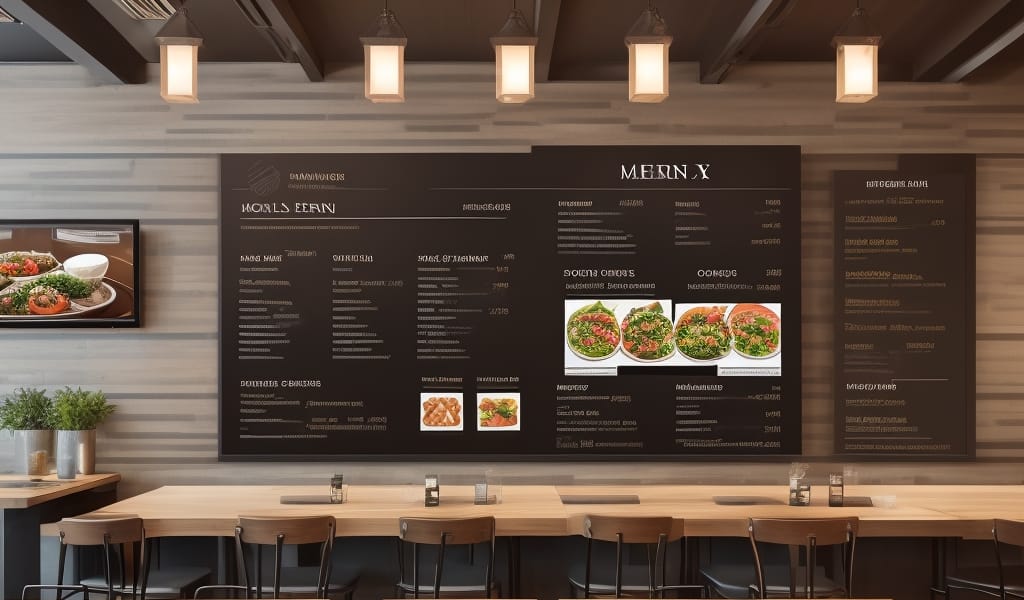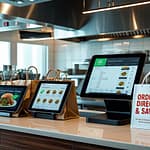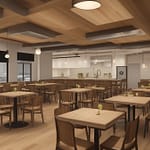Key Takeaways:
- Digital menus offer flexibility in updating menu items and prices frequently, providing real-time accuracy to customers.
- Printed menus may provide a more personal touch, often appreciated by a certain demographic of customers.
- Incorporating a combination of both digital and print menus can cater to a wider range of customer preferences.
- Implement quick response (QR) codes on printed menus that link to digital menus for more detailed information and promotions.
- Regularly review and optimize your menu strategy, considering factors such as customer feedback, cost-efficiency, and the latest technology trends.
Introduction: Digital Menus vs. Printed Menus—The Big Decision
The menu is one of the most critical tools in a restaurant’s customer experience arsenal. It communicates your brand, showcases your culinary offerings, and directly influences ordering decisions. As technology evolves, restaurant owners and managers face a key decision: should the traditional printed menu give way to digital menus, or is there still value in maintaining a tangible, printed format?
Each menu type offers distinct advantages and challenges, and choosing the right approach can significantly impact customer satisfaction, operational efficiency, and your overall profitability. This article explores the pros and cons of digital versus printed menus, supported by practical advice and real-world examples, empowering you to make an informed choice that best suits your restaurant’s unique needs.
The Case for Digital Menus
Enhanced Flexibility and Convenience
Digital menus provide unmatched flexibility, allowing you to update offerings quickly and effortlessly. Whether adjusting prices, highlighting daily specials, or removing unavailable items, digital menus ensure your customers always have accurate, timely information.
- Instant menu updates without reprinting costs
- Ability to highlight specials and promotions dynamically
- Reduced wait times as menus are immediately accessible via QR codes or tablets
Improved Hygiene and Safety
In the post-pandemic era, customers have become more conscious of hygiene and safety. Digital menus delivered via QR codes or tablets minimize physical contact, enhancing customer comfort and confidence.
- Reduced risk of contamination through shared physical menus
- Easy compliance with health and safety regulations
- Enhanced perception of restaurant cleanliness and modernity
Greater Opportunity for Analytics and Insights
Digital menus offer powerful analytics capabilities, allowing restaurant managers to gather insights into customer behaviors, preferences, and ordering patterns. This valuable data can inform strategic decisions about menu optimization, pricing, and promotional strategies.
- Track item popularity and customer engagement
- Refine menu offerings based on actionable data
- Personalize customer experiences through targeted promotions
Industry Example: Chili’s Digital Transformation
Chili’s, a well-known casual dining chain, successfully implemented digital tablet menus across their locations, significantly enhancing customer experience. This move enabled diners to browse menus, customize orders easily, and even pay directly from their tables, leading to faster turnaround times and increased customer satisfaction scores.
The Advantages of Printed Menus
Tangible Branding and Customer Experience
Printed menus offer a tactile experience that digital alternatives simply cannot replicate. The physical menu can reinforce your brand identity, convey a sense of authenticity, and enhance the overall dining experience by appealing to multiple senses.
- Printed menus can utilize unique textures, colors, and materials
- Create a memorable first impression that aligns with restaurant ambiance
- Provide customers with a tangible connection to the brand
Accessibility and Inclusivity
Printed menus ensure accessibility for all demographics, including customers who may not be comfortable using digital devices or who lack reliable smartphone access. This inclusivity can be crucial in attracting and retaining a diverse customer base.
- Cater to customers who prefer traditional methods of ordering
- Support older demographics or those less tech-savvy
- Eliminate potential barriers to customer satisfaction
Reduced Technological Dependence and Costs
While there are costs associated with printing and updating menus, printed menus avoid ongoing technology investments, training, and maintenance. For many restaurants, particularly independent or smaller establishments, this approach can prove more cost-effective and straightforward.
- No need for ongoing tech support and device maintenance
- Avoid potential technical issues that disrupt service
- Predictable budgeting for menu printing and updates
Industry Example: Cheesecake Factory’s Iconic Printed Menus
The Cheesecake Factory is renowned for its extensive and visually appealing printed menu. The physical menu creates a memorable dining experience and effectively showcases their comprehensive offerings, reinforcing their brand reputation. Despite industry trends toward digital solutions, Cheesecake Factory’s unwavering commitment to printed menus continues to resonate strongly with their customer base.
Combining Digital and Printed Menus: A Balanced Strategy
Harnessing the Benefits of Both Formats
Many successful restaurants adopt a hybrid approach, leveraging both digital and printed menus to maximize customer satisfaction and operational efficiency. By thoughtfully integrating digital and printed menus, you can address diverse customer preferences while benefiting from each format’s unique strengths.
- Use printed menus for dine-in experiences and digital menus for takeout and delivery
- Offer QR code options alongside physical menus to cater to customer choice
- Maintain printed menus for core offerings and digital menus for specials and seasonal updates
Industry Example: Starbucks’ Hybrid Menu Strategy
Starbucks effectively blends printed in-store menus with digital options available through their mobile app. Customers can conveniently browse and customize orders digitally; however, in-store printed menus offer clarity, simplicity, and quick reference for casual customers. This balanced approach enhances customer experiences and accommodates varying preferences.
Making the Right Decision for Your Restaurant
When deciding between digital and printed menus, it’s crucial to evaluate your restaurant’s unique circumstances, customer demographics, and operational goals. Consider the following factors to guide your decision-making:
- Your target customer base and their technology preferences
- Budgetary constraints and resource availability
- Brand identity and the desired customer experience
- Operational requirements for menu updates and flexibility
Actionable Steps for Choosing the Best Menu Strategy
To help ensure you make the right decision, follow these practical steps:
- Survey your customers to understand their menu preferences
- Analyze your operational capabilities and technology infrastructure
- Evaluate competitors and industry leaders to benchmark best practices
- Pilot test digital menus in select locations or scenarios before a full-scale rollout
- Regularly reassess your menu strategy based on customer feedback and operational results
Conclusion: Finding the Optimal Solution for Your Restaurant
The choice between digital menus and printed menus ultimately depends on your restaurant’s specific needs, customer preferences, and operational realities. Both menu formats offer distinct advantages, and adopting a strategic, thoughtful approach is essential to maximizing customer satisfaction, brand loyalty, and profitability.
Consider embracing a hybrid approach that leverages the strengths of both digital and printed menus, allowing you to cater effectively to a diverse customer base. By carefully evaluating your options, gathering customer feedback, and implementing practical steps, you can craft a successful menu strategy that resonates with your audience and elevates your restaurant experience.






Comments
Be the first to comment on this article.